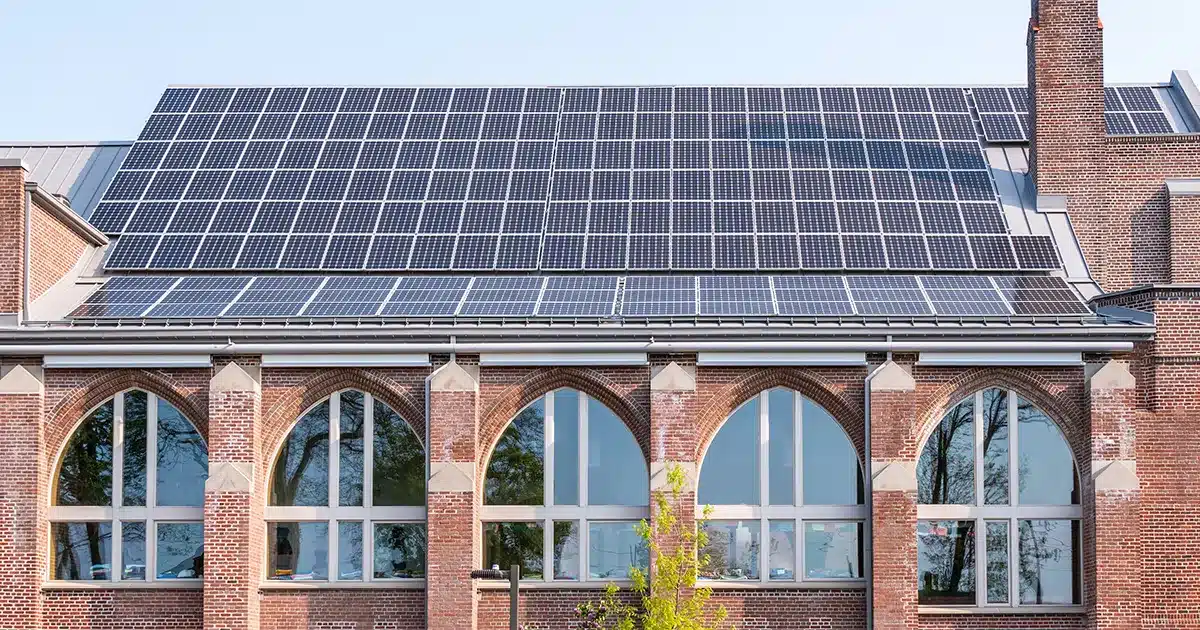How much does an energy efficiency report cost, and what should you expect?
Under Australia’s Commercial Building Disclosure (CBD) Program, most commercial buildings must meet energy efficiency standards before they can be sold or leased.
One key part of this compliance process is the Building Energy Efficiency Certificate (BEEC) – a detailed document that reports on a building’s energy efficiency, including a NABERS Energy rating and a Tenancy Lighting Assessment (TLA).
If you’re planning for a new lease or sale, understanding the energy efficiency report cost is essential.
This article outlines what goes into pricing a BEEC assessment, what commercial clients should expect and why it’s more than just a compliance checkbox – it’s an investment in long-term building performance.
What is a Building Energy Efficiency Certificate (BEEC)?
A Building Energy Efficiency Certificate (BEEC) is a compliance requirement under the Commercial Building Disclosure (CBD) Program for office spaces larger than 1,000 square metres for sale or lease.
Its purpose? To provide transparent, standardised information about a building’s energy performance to potential buyers and tenants.
A BEEC includes two main components:
- NABERS Energy Rating – This measures a building’s energy efficiency, using real, metered energy data over 12 months. This provides an energy rating and helps benchmark efficiency and identify opportunities for improvement.
- CBD Tenancy Lighting Assessment (TLA) – This assesses the efficiency of the general lighting in a tenant office space, including power density, and installed or proposed lighting controls.
BEECs must be publicly accessible (via the Building Energy Efficiency Register) and are valid for 12 months from the date it is issued.
A professional BEEC assessment provides an accredited commercial energy rating that reflects your building’s performance and helps meet disclosure obligations.
By making building energy data more transparent, BEECs support informed decision-making and encourage energy performance improvements across the commercial property sector.
How Much Does a BEEC Assessment Cost?
The cost of a Building Energy Efficiency Certificate (BEEC) assessment can vary, depending on several factors.
While some straightforward assessments may sit at the lower end, more complex sites (for example, with multiple tenancies or additional lighting requirements) can push the cost higher. Let’s consider the following.
1. Typical Pricing Ranges
As a general guide, here’s what you can expect in terms of BEEC assessment and NABERS Rating costs (excluding GST) for:
- small-to-medium commercial buildings: $1000 – $4,500
- larger, complex buildings (i.e. those that are multi-tenanted, have high energy usage, or complex layouts): $3,000 – $5,500.
Lighting assessments (TLA) may add additional costs, depending on building size and configuration.
2. Factors Affecting Cost
Factors that can influence the final cost of a BEEC assessment, include:
- size and number of tenants/tenancies – more floors or tenants means requires a larger investment, coordinating site access and analysis
- complexity – non-standard layouts or mixed-use spaces can increase an accredited assessor’s time on-site and in reporting
- location – regional sites may incur extra travel or loading fees
- scope of services – such as a CBD Tenancy Lighting Assessment fee, which can increase cost and assessment time.
- existing documentation – such as access to NABERS data, metering data and up-to-date building plans can streamline the process and reduce costs.
3. Example Cost Scenarios
Let’s take a minute to consider some example pricing.
A 1,500 m² commercial office in a metro area with a simple tenancy structure and good documentation may cost $1,800 – $3,000.
A 2,500 m² multi-level site with multiple tenancies and a full lighting assessment might cost $3,000–$4,500.
While BEEC assessments represent a compliance cost, they’re also a strategic investment. They can support better building performance, lower emissions and greater appeal to energy-conscious tenants and investors.
What’s Included in the Assessment?
When you engage an accredited assessor for a BEEC, you’re getting more than just a one-off inspection. It’s a structured process with key deliverables that support compliance and transparency.
A typical BEEC assessment includes the following:
1. Site Inspection and Energy Data Collection
An assessor visits the building to gather operational data, such as HVAC systems, base building energy use and layout details. This can also involve reviewing historical utility data and inspecting meters.
2. NABERS Energy Rating and Certification
Using the previous data, the assessor can model the building’s performance under the NABERS Energy rating system. The provides an independent, verified star rating that reflects the building’s base energy efficiency.
3. CBD Tenancy Lighting Assessment (TLA) (if required)
Where applicable, the assessor may conduct an assessment of lighting systems, measuring power density and lighting control systems – in line with CBD Program guidelines.
4. BEEC Registration and Submission
Next, the assessor will make a formal submission to register your BEEC, to meet disclosure obligations.
5. Coordinating with Stakeholders
Assessors may also liaise with building managers, consultants or other key stakeholders (such as facilities teams) to gather documentation and access building information, to finish completing the assessment.
This end-to-end process supports compliance and benchmarking for commercial buildings.
Why Investing in a BEEC Assessment Makes Business Sense
For commercial building owners, a BEEC is more than just a compliance requirement, it’s a smart business investment.
1. Meet Legal Requirements
Let’s talk compliance first. BEECs are legally required for office spaces over 1,000m² that are being sold or leased.
Non-compliance can result in fines and significant penalties (under the Building Energy Efficiency Disclosure Act 2010). So, staying ahead of disclosure obligations protects you legally, and ensures your property is market ready.
2. Improve Market Value
Beyond compliance, a BEEC can improve your building’s attractiveness to potential tenants. Many organisations are prioritising sustainability in their leasing decisions. A strong NABERS rating can signal a commitment to energy performance and lower operational costs.
A BEEC can also support their broader corporate sustainability goals, and demonstrate their environmental commitment to investors, team members and the public.
3. Identify Areas for Improvement
The assessment process can help you discover areas for improvement. You can gain more information about how your build could operate more efficiently and produce potential long-term cost savings (on energy bills).
If you’re looking to lease or sell, an office building compliance energy report like the BEEC assessment is both practical, and a sound business decision.
Getting a Quote: Here’s What You’ll Need
If you’re looking to get an accurate quote to understand the energy efficiency report cost of a BEEC assessment, your assessor will need some basic details upfront.
Preparing the following information can help to streamline the process:
- electricity meter data (such as your NMI or recent bills)
- building floor plans, if available (preferably Net Lettable Area Plans using Australian Property Council standards.
- tenancy layout information, including size and occupancy, access arrangements for a site inspection.
These details help an assessor understand the scope and complexity of your building, and provide an accurate quote based on your building’s requirements. Assessors can provide a tailored quote, only after understanding the specifics of a project.
At Application Solutions, we’re well-versed in supporting clients with Building Energy Efficiency Rating (BEEC). We take the time to carefully assess each project to provide clear, competitive quotes and support options. That way, you know exactly what’s involved before moving forward.
Get Your BEEC Assessment Started
Yes, the cost of a BEEC assessment can vary depending on a building’s size, complexity and scope – but it’s an investment that delivers real value. From supporting compliance, to boosting your building’s market appeal, it’s a great way to meet requirements, provide commercial transparency and improve long-term energy performance.
If you’re motivated to streamline the process and stay ahead of compliance obligations, consider engaging an experienced, accredited assessor.
Contact us today to get an obligation-free quote for your commercial energy efficiency report – and take the first step toward smarter, more sustainable building performance





